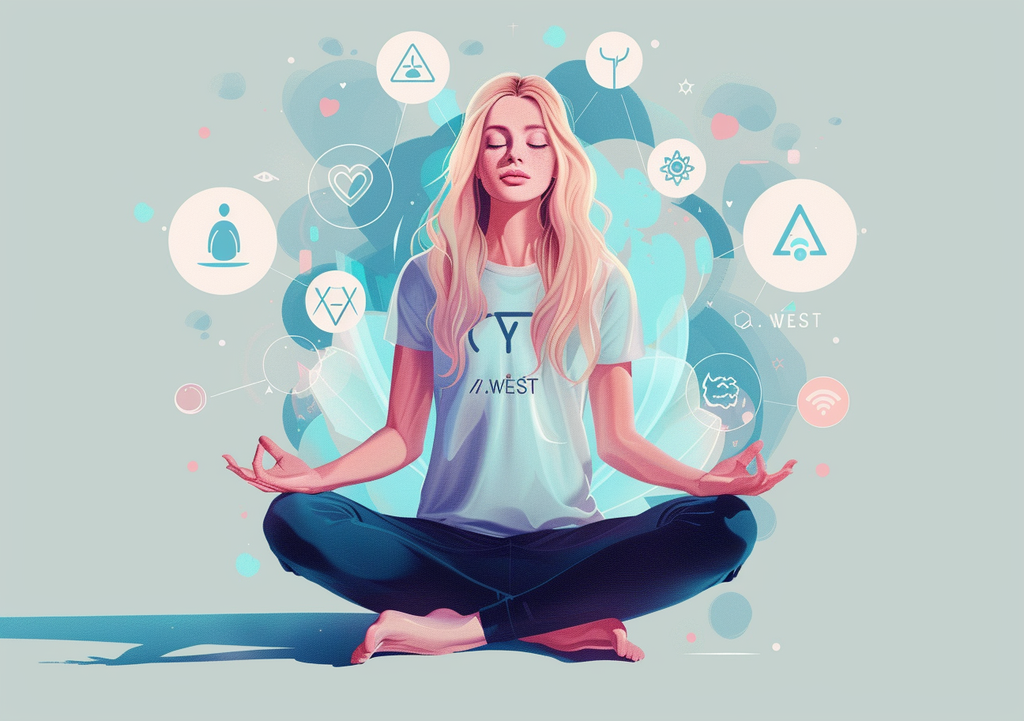This guide looks into the benefits of meditation, explores different meditation techniques suitable for beginners, and provides practical tips to embark on your meditation journey.
Key Takeaways
| What is Meditation? |
|
||
|---|---|---|---|
|
|
||
|
|
||
|
|

The Science Behind Meditation
Mounting scientific evidence supports the positive impact of meditation on mental and emotional well-being. Studies show that meditation practices activate the parasympathetic nervous system, promoting relaxation and reducing the stress hormone cortisol. Regular meditation has also been linked to increased grey matter in brain regions associated with focus, attention, and emotional regulation.
Incorporating meditation into your daily routine can be a transformative experience. Here are some practical tips to help you get started:
-
Choose a Convenient Time and Place: Meditate at a time and place where you won’t be disturbed. Many people find that meditating first thing in the morning helps them start their day with a clear mind.
-
Start Small: If you’re new to meditation, start with just a few minutes each day and gradually increase the duration as you become more comfortable with the practice.
-
Use Guided Meditations: Consider using guided meditations or meditation apps, which can provide structure and support as you learn to meditate.
-
Consistency is Key: Try to meditate at the same time every day. Consistency can help make meditation a regular part of your routine.
-
Combine Meditation with Physical Activity: Practices like yoga, tai chi, and walking meditations can enhance the benefits of meditation. These practices combine physical movement with mindfulness, providing a holistic approach to well-being.
- Be Patient with Yourself: Remember, meditation is a practice. Don’t worry if your mind wanders or if you don’t feel calm and relaxed right away. With time and practice, you’ll start to notice the benefits.
Remember, the journey of meditation is personal and unique for everyone. Start where you are and be patient with your progress.
Meditation Techniques for Beginners
While there are numerous meditation techniques, here are three beginner-friendly approaches:
-
Mindfulness Meditation: This practice focuses on cultivating present-moment awareness. Find a quiet space, sit comfortably, and close your eyes (optional). Focus on your breath, feeling the rise and fall of your chest or abdomen with each inhalation and exhalation. When your mind wanders, gently guide your attention back to the breath without judgment.
-
Mantra Meditation: This technique involves silently repeating a calming word or phrase (mantra) as you focus on your breath. A common mantra is "om," but you can choose a word or phrase that resonates with you.
- Guided Meditation: Many guided meditations are available online or through apps. A guide will lead you through a visualization or focus point, helping you achieve a relaxed and mindful state.
In my decade-long experience as a certified naturopath, I've witnessed the transformative power of meditation on countless patients. Many come to me seeking solutions for stress, anxiety, and difficulty focusing. Meditation, a practice cultivated across various cultures, offers a powerful tool to cultivate mental clarity and emotional well-being.

The Power of Meditation
Meditation is a practice that has been used for thousands of years to promote relaxation, focus the mind, and achieve a mentally clear and emotionally calm state. It involves techniques such as mindfulness, or focusing the mind on a particular object, thought, or activity, to train attention and awareness.
Mental Clarity
Meditation can help clear the mind, improving mental clarity and decision-making abilities. A study published in the Journal of Cognitive Enhancement found that regular meditation can lead to improvements in cognitive abilities, including attention, memory, and executive function.
Emotional Well-being
Meditation can also have profound effects on emotional well-being. It can help reduce stress, anxiety, and depression, and promote feelings of peace and tranquility. A meta-analysis of over 200 studies found that mindfulness meditation can be an effective treatment for a variety of psychological issues, including anxiety, depression, and stress.
Practical Tips for Beginners
-
Start Small: Begin with short meditation sessions (5-10 minutes) and gradually increase the duration as you become more comfortable.
-
Find a Quiet Space: Choose a place free from distractions where you can sit or lie down comfortably.
-
Focus on the Breath: The breath is your anchor during meditation. Pay attention to the sensation of your breath entering and leaving your body.
-
Acknowledge Wandering Thoughts: It's natural for your mind to wander. When this happens, gently guide your attention back to your breath without judgment.
- Be Patient and Consistent: Like any skill, meditation takes practice. Be patient with yourself and establish a regular meditation routine, even if it's just a few minutes each day.

Meditation Beyond Sitting:
Meditation isn't limited to sitting in a quiet space. Here are some ways to integrate mindfulness into everyday activities:
-
Yoga: Combining physical postures, breathwork, and meditation, yoga fosters a sense of calm and inner peace.
-
Tai Chi: This gentle form of exercise incorporates slow, mindful movements that promote focus and relaxation.
- Walking Meditation: While walking, focus on the sensations of your feet touching the ground, the rhythm of your breath, and the sights and sounds around you.
Walking meditation is a form of meditation in action. In this practice, you use the experience of walking as your focus. It can be just as profound as sitting meditation, and has the added advantage of bringing the meditative experience into your activity.
Meditation is a powerful tool for cultivating mental clarity, emotional well-being, and inner peace. By incorporating meditation practices into your daily routine, you can embark on a transformative journey towards a healthier and happier you. Remember, meditation is a practice, not a destination. Be patient, consistent, and enjoy the journey!
Credible Sources:
- National Institutes of Health: https://pubmed.ncbi.nlm.nih.gov/32635830/
- Harvard University: https://news.harvard.edu/gazette/story/2011/01/eight-weeks-to-a-better-brain/







